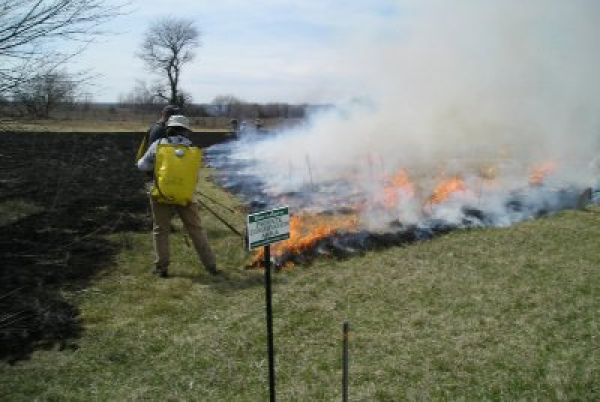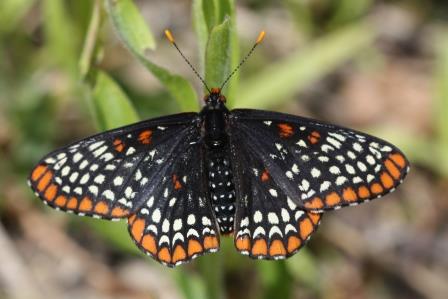
Does Fire Bug Wildlife?
When conservation groups burn natural land, does it disturb wildlife species? Simply put, yes.
Then why do we do it, and how can we call it “ecological fire” if it may harm some species?
Historically, fire was a natural part of the ecology of the Midwest before the land was settled by European-Americans 200 or more years ago. As settlers moved into the area, they did their best to suppress wildfires. After all, fire is dangerous and destructive, especially to human settlements that might be in the path of a fast-moving inferno.
However, over millennia, natural systems – plants, insects and wildlife – had developed to be well adapted to fire. And these systems suffered from the absence of regular landscape-scale burns.
The oaks that dominated the local landscape during settlement in the 1830s are a prime example. In 1837, when the Public Land Survey was done for McHenry County, 95% of the trees identified in the county were oaks, and the vast majority of those were bur oaks. Burs are known for their thick, corky bark that provides some protection from fire.
Historically, maples were found only in a few sheltered areas that had escaped the natural wildfires. Their bark does not afford protection from the flames. Today, maples are common. Maples grow quickly, and will grow well in shady areas. Oaks, by contrast, need ample sunlight to grow. These facts give maples a competitive advantage in a landscape without wildfires, and we can see this on the landscape in the increased numbers of maple trees in local woods.
When I first learned about “ecological fire,” I wondered about the effect on insects and small mammals. Over the years, I have learned that while there are some that die as a result of a fire, sufficient numbers survive to keep the populations going.
There is ample research on this fact, much conducted by scientists who study insect and animal species, so their allegiances are to the critters rather than the plants. Yet, even with the research, I think it is normal to wonder about the effects of such a powerful and destructive force on creatures that may not be able to move out of harm’s way.
The fact is that small mammals retreat to their burrows or climb trees. Amphibians like frogs and salamanders hunker down in the water until the fire passes. And, insect eggs and larvae are apparently in sufficient quantities that they are never all destroyed, even when the land looks like nothing could have survived.
 A good local example of this is a small property that TLC manages near Woodstock, the 9-acre Prairie Ridge Fen at the northeast corner of Route 14 and Dean Street. There is an uncommon butterfly found at the property called a Baltimore Checkerspot. The butterfly depends on a specific wetland plant, turtlehead, for its lifecycle.
A good local example of this is a small property that TLC manages near Woodstock, the 9-acre Prairie Ridge Fen at the northeast corner of Route 14 and Dean Street. There is an uncommon butterfly found at the property called a Baltimore Checkerspot. The butterfly depends on a specific wetland plant, turtlehead, for its lifecycle.
Over the years that TLC has managed the property, we’ve burned it several times. And, because of the property’s size and configuration, when it is burned, virtually the entire site goes up in flames. Add to that the fact that the property is isolated from other, similar habitat, and one might conclude that this would be a tough place for the Checkerspots to survive.
The first time I was involved in burning the site, it was such a complete burn that I worried we might have destroyed the Baltimore Checkerspot population in the process. Well, we didn’t. While I have little doubt that some butterfly eggs perished, the butterfly population continues to this day.
Personally, I think the best that people can do for nature is try our best to restore natural processes, and then trust the ecosystems to sort themselves out. After all, they have been around a lot longer than we have.